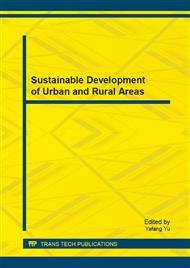p.383
p.388
p.392
p.395
p.401
p.406
p.410
p.415
p.421
Compensation Effect of Expansive Agent on Shrinkage of Self-Compacting Concrete
Abstract:
The compensation effect of expansive agent on shrinkage of self-compacting concrete (SCC) are studied. The deformation of Concrete was tested by concrete comparator, and the qualitative and quantitative analysis of hydration products were done by X-ray diffractometer (XRD). The results show that the dosages of mineral admixture and curing conditions affect the application results of expansive agents markedly. SCC samples containing expansive agent cured in the water are expanding within the test time. In the case of watering condition and natural curing condition, the samples are always shrinkage within test time, but mineral admixtures have a good effect to resist the shrinkage of SCC. Microstructure analysis show that ettringite content is reduced slightly due to the reduction of the alkalinity of SCC resulted by more mineral admixture. However, when at water curing condition, humidity inside SCC is much higher, which makes ettringite content larger even though with more mineral admixture. So, curing is the most important factors for the micro-expansion of SCC containing expansive agent.
Info:
Periodical:
Pages:
401-405
Citation:
Online since:
January 2014
Authors:
Price:
Сopyright:
© 2014 Trans Tech Publications Ltd. All Rights Reserved
Share:
Citation:


